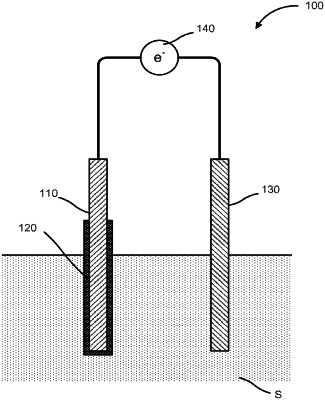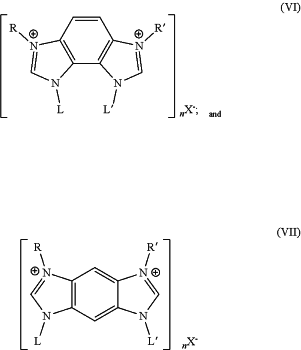| CPC G01N 27/4168 (2013.01) [C07F 5/025 (2013.01); G01N 27/4161 (2013.01); G01N 33/48707 (2013.01); G01N 33/66 (2013.01); G01N 33/6812 (2013.01); G01N 33/9413 (2013.01)] | 7 Claims |

|
1. A composition comprising:
boronic acid-based synthetic redox-active receptors that can electrochemically sense a target analyte in a sample solution, and
a salt selected from the group consisting of:
 where:
X− is an anion;
R and R′ are independently —(CH2)p—R1;
R1 is C1-C6 alkyl-B(OR2)(OR3), aryl-B(OR2)(OR3), heteroaryl-B(OR2)(OR3), or heterocyclyl-B(OR2)(OR3);
R2 and R3 are independently H, C1-C6 alkyl or R2 and R3 can combine with the B atom to form a ring system;
L and L′ are independently H, halogen, OH, CN, C1-C6 alkyl, C2-C6 alkenyl, C2-C6 alkynyl, aryl, heteroaryl, heterocyclyl, cycloalkyl, alkylthio, arylthio, alkoxy, aryloxy, —COOR4, NH2, —C(O)N(H)—(CH2)p—N(H)C(O)—R4, —C(O)NH(R4), or —N(H)C(O)R4,
R4 is independently at each occurrence H, C1-C6 alkyl, C2-C6 alkenyl, C2-C6 alkynyl, aryl, heteroaryl, heterocyclyl, or cycloalkyl;
n is 2, 3, 4, 5, or 6; and
p is independently 0, 1, 2, 3, 4, 5, or 6.
|